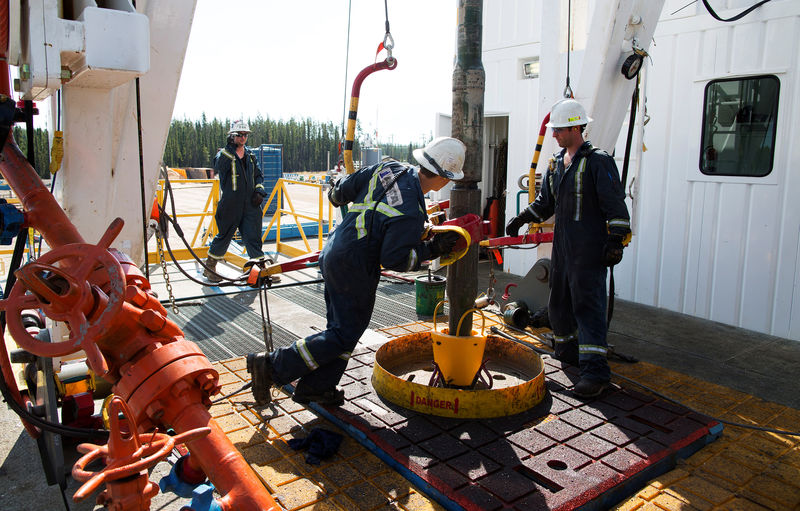By Peter Nurse
Investing.com -- Oil prices rose Thursday, climbing to their highest level in a month, boosted by a sharper-than-expected drop in official U.S. crude stocks as a cold snap hits the United States.
By 09:15 ET (14:15 GMT), U.S. crude futures traded 1.3% higher at $79.28 a barrel, while the Brent contract rose 1% to $83.05 a barrel.
The crude benchmarks are adding Thursday to the strong gains seen in the previous session after official data from the Energy Information Administration showed U.S. crude inventories fell by almost 6 million barrels for the week ending on Dec. 16, much more than expected.
Distillate stocks, which include heating oil and jet fuel, also declined, defying expectations for an increase.
Helping the tone Thursday was news of the first major winter storm of the season hitting large parts of the U.S., with warnings of freezing weather now stretching from Washington state to Maine and down to the Gulf of Mexico coast.
This is likely to result in large demand for heating oil and overall energy usage, although jet fuel could be impacted if the storm hits travel during this busy holiday season.
Additionally, economic data released earlier Thursday showed that the number of Americans filing new claims for unemployment benefits increased less than expected last week, while the economy rebounded faster than previously estimated in the third quarter.
This points to a resilient U.S. economy in the face of the aggressive monetary tightening, suggesting that the downturn predicted for next year may be shallower than previously feared, good news for crude demand in the largest consumer in the world.
Still, oil is poised to end an extraordinarily volatile year only modestly higher as demand from China, the largest importer in the world, has been hit by tight mobility restrictions as the country struggles to contain COVID infections.
The Chinese government has recently decided to ease such restrictions, but the country has suffered a big spike in cases as a result, and the impact on crude demand remains unclear.
Additionally, the impact on global supply of the price cap on Russia’s seaborne crude shipments is uncertain.
Reuters calculated that exports of Russia's flagship Urals crude blend from Baltic Sea ports may fall by up to a fifth in December. If these figures are borne out, supply is likely to remain tight into 2023, supporting prices into the new year.
